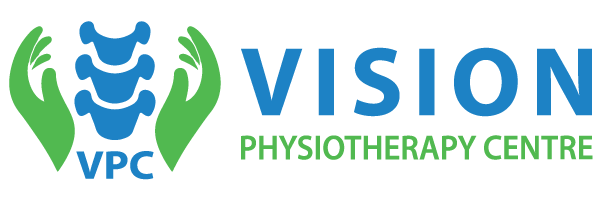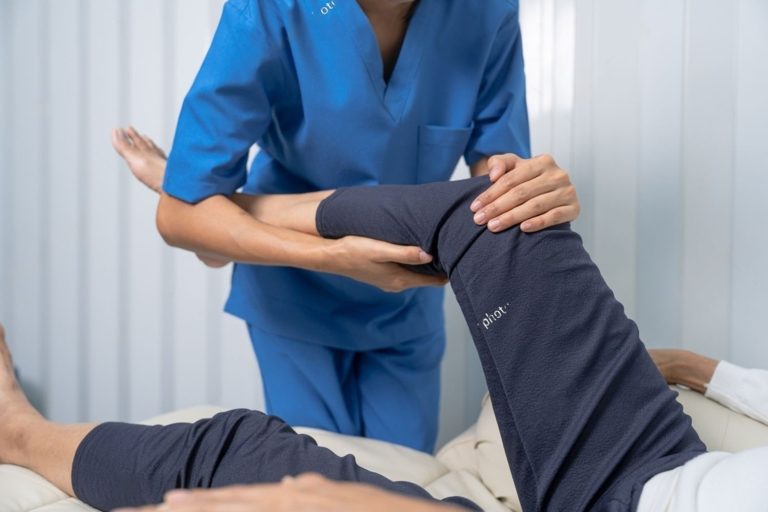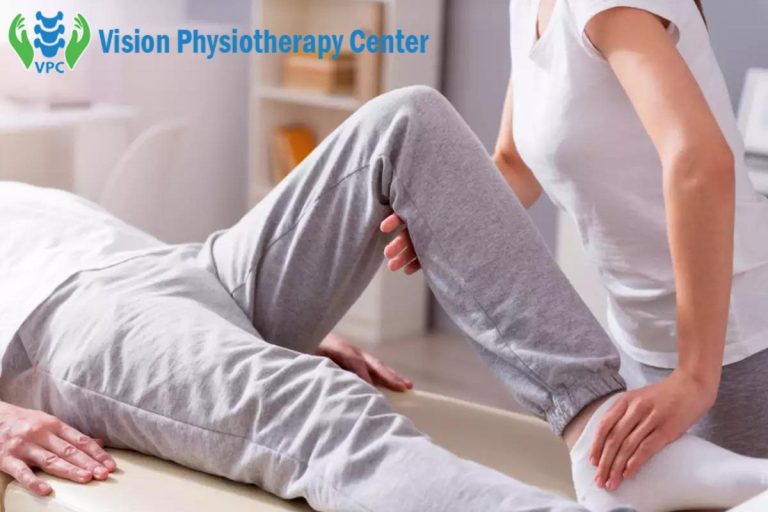What type of patients may benefit from rehabilitation? Rehabilitation is beneficial for a wide range of patients who may require assistance in recovering and improving their physical and mental well-being. Individuals who have experienced injuries, surgeries, or medical conditions that affect their mobility, strength, or functionality can benefit from rehabilitation.
This includes patients recovering from fractures, strokes, heart surgeries, or those living with chronic conditions such as arthritis or neurological disorders. Rehabilitation programs are designed to meet the specific needs of each patient, focusing on restoring function, reducing pain, and enhancing the overall quality of life.
Rehabilitation aims to help patients regain independence and successfully reintegrate into their daily activities by tailoring therapies and exercises to individual requirements. In this article, we will discuss what types of patients may benefit from rehabilitation.
What Type Of Patients May Benefited From Rehabilitation Therapy By Physical Therapists?
Rehabilitation can help many different patients who may need assistance in recovering and improving their physical and mental health. Patients who have had injuries, surgeries, or medical problems that affect how they move, their strength, or their ability to do things can benefit from rehabilitation.
Inpatient individuals, including stroke survivors and those with chronic conditions like arthritis or neurological disorders, benefit from rehabilitation. It helps manage pain, improve function, and enhance overall quality of life. Rehabilitation therapy is particularly effective for stroke survivors, allowing them to regain lost skills and achieve greater independence.
Rehabilitation focuses on restoring normal function, reducing pain, and improving overall quality of life. By customizing therapies and exercises to fit each person, rehabilitation aims to help patients become independent again and successfully return to their normal activities.
What Is The Main Benefit Of Rehabilitation?
Rehabilitation’s main benefit is its ability to restore and improve an individual’s functionality, independence, and quality of life after an injury, illness, or surgery.
Rehabilitation helps individuals regain their physical, mental, and cognitive abilities by providing targeted therapies and interventions. This enables them to participate in daily activities and achieve optimal well-being.
What Is Rehabilitation?
Rehabilitation is a holistic approach to helping individuals recover and improve their physical, mental, and cognitive abilities after an injury, illness, or surgery.
It encompasses various therapies, interventions, and support systems designed to enhance functionality, independence, and well-being. The goal of rehabilitation is to facilitate a person’s return to their daily activities and maximize their quality of life.
Importance Of Rehabilitation
Rehabilitation cannot be overstated. It plays a crucial role in helping individuals recover, regain function, and improve their quality of life. Rehabilitation encompasses various therapies and exercises tailored to address specific needs, whether recovering from an injury, managing a chronic condition, or adapting to a disability.
Through rehabilitation, individuals can regain strength, improve mobility, and enhance their physical and mental well-being. Rehabilitation teaches necessary skills and strategies to promote independence and maximize daily functioning.
With healthcare professionals’ guidance, rehabilitation can significantly improve outcomes and help individuals lead fulfilling lives.
When Is The Person Needs To Be Rehabilitated?
A person needs to be rehabilitated when they experience a decline or loss in their physical, mental, or cognitive abilities due to an injury, illness, or surgery. Rehabilitation is necessary to restore functionality, enhance independence, and improve overall well-being, enabling the person to regain their quality of life. Autism cannot be an issue while curing a patient.
What Is The Most Common Type Of Rehab?
Physical therapy is one of the most common types of rehabilitation. It focuses on restoring physical function, improving mobility, and reducing pain through exercises, manual techniques, and other therapeutic interventions.
Physical therapy is widely used for various conditions, including musculoskeletal injuries, post-surgical recovery, neurological disorders, and chronic pain management.
Benefits Of Rehabilitation For Different Patient Groups, Especially For Inpatient People
What types of patients may benefit from rehabilitation? Rehabilitation offers numerous benefits for different patient groups, catering to their specific needs and conditions. For individuals recovering from injuries or surgeries, rehabilitation helps restore mobility, strength, and flexibility, facilitating a faster and more complete recovery.
Inpatient individuals, including stroke survivors and those with chronic conditions like arthritis or neurological disorders, benefit from rehabilitation. It helps manage pain, improve function, and enhance overall quality of life. Rehabilitation therapy is particularly effective for stroke survivors, allowing them to regain lost skills and achieve greater independence.
Additionally, older adults can benefit from rehabilitation to maintain and improve their physical abilities, prevent falls, and enhance their overall well-being. Rehabilitation provides tailored therapies, exercises, and strategies to address the unique challenges faced by each patient group, empowering them to achieve their maximum potential and lead fulfilling lives.
What Type Of Patients May be Benefited From Rehabilitation For Decrease Pain
Patients with various conditions may benefit from rehabilitation to decrease pain. This includes individuals with musculoskeletal injuries, such as sprains or strains, as well as those with chronic pain conditions like fibromyalgia or arthritis.
Additionally, patients recovering from surgeries or managing neurological disorders, such as multiple sclerosis or stroke, can also benefit. Rehabilitation interventions, such as physical therapy, occupational therapy, and pain management techniques, help improve function, reduce inflammation, and promote overall well-being, decreasing pain levels for these patients.
Common Conditions And Patients Benefiting From Rehabilitation
Rehabilitation benefits patients with a wide range of common conditions, helping them improve their physical and mental well-being. Musculoskeletal injuries, including fractures and sprains, can be treated with rehabilitation to regain strength, flexibility, and mobility.
Rehabilitation can benefit patients recovering from surgeries, such as joint replacements or cardiac procedures, by restoring function and facilitating a smooth recovery. It can also help individuals with neurological conditions like stroke, multiple sclerosis, or Parkinson’s disease by enhancing motor skills, coordination, and overall functioning.
Patients with chronic pain conditions, such as arthritis or fibromyalgia, can benefit from rehabilitation to manage pain, improve functionality, and enhance their quality of life.
Rehabilitation plays a crucial role in assisting patients with various common conditions to regain independence, maximize their potential, and improve their overall well-being by providing tailored therapies and interventions.
What Is The Most Prevalent Condition Requiring Access To Rehabilitation Services?
Musculoskeletal disorders are the most prevalent condition requiring access to rehabilitation services. These disorders affect the bones, joints, muscles, ligaments, and tendons, leading to pain, limited mobility, and functional impairments. Common musculoskeletal conditions include back pain, osteoarthritis, rheumatoid arthritis, and sports injuries.
Rehabilitation services are crucial in managing these conditions. They provide physical therapy, exercises, manual therapy, and assistive devices. Through rehabilitation, individuals with musculoskeletal disorders can improve their strength, flexibility, and functionality, better cope with daily activities, and improve their overall quality of life.
What Is The Most Important Component Of Rehabilitation?
The most critical component of rehabilitation is personalized care. Personalized care focuses on tailoring treatment plans and interventions to meet the specific needs of each individual. It involves assessing the patient’s condition, goals, and abilities and designing a comprehensive plan that addresses their unique challenges.
This may include physical therapies, exercises, pain management techniques, and psychological support. By providing personalized care, rehabilitation professionals can effectively address the patient’s needs, maximize their potential for recovery, and optimize their overall well-being.
Advantages And Disadvantages Of Rehabilitation
Rehabilitation offers several advantages for individuals seeking to recover from injuries, surgeries, or medical conditions. It helps restore function, improve mobility, and enhance overall quality of life. Rehabilitation promotes independence, allowing individuals to regain control over their lives and engage in daily activities.
It also provides emotional and psychological support, aiding the adjustment to changes and boosting confidence. However, there are also some disadvantages to consider. Rehabilitation can be time-consuming and require consistent effort.
It may involve physical discomfort or temporary worsening of symptoms during recovery. Additionally, accessibility and affordability of rehabilitation services may vary, posing challenges for some individuals. Despite these potential drawbacks, the benefits of rehabilitation often outweigh the disadvantages, making it an essential and valuable component of healthcare.
What Are The Benefits Of Mental Health Rehabilitation?
Mental health rehabilitation offers several benefits for individuals seeking support and recovery. It provides a structured and therapeutic environment where individuals can learn coping skills, manage symptoms, and enhance their well-being. Mental health rehabilitation helps individuals regain independence and improve their social and occupational functioning.
Mental health rehabilitation offers a supportive and safe space for individuals to express themselves and receive guidance from mental health professionals. Through various therapies, such as counselling, group sessions, and skill-building exercises, promotes self-awareness, resilience, and a sense of empowerment.
Mental health rehabilitation can help individuals develop strategies for managing stress, improving relationships, and maintaining a healthy lifestyle. Overall, it plays a crucial role in facilitating recovery, improving quality of life, and promoting long-term mental wellness.
What Are The Benefits Of Rehabilitation Exercise?
Rehabilitation exercise offers numerous benefits for individuals undergoing recovery or managing various health conditions. It helps improve strength, flexibility, and endurance, enhancing overall physical fitness. Rehabilitation exercise promotes joint mobility, reducing stiffness and pain.
It aids in the restoration of functional abilities and enhances balance and coordination, reducing the risk of falls. Additionally, exercise during rehabilitation can improve cardiovascular health, boost mood, and alleviate symptoms of depression and anxiety. It also supports weight management and contributes to overall well-being.
Rehabilitation exercises can be vital in optimizing recovery, promoting independence, and improving the overall quality of life by tailoring them to individual needs and goals.

What Are The 5 Stages Of Rehabilitation?
The rehabilitation process generally involves five stages to guide individuals toward recovery.
- The first stage is the assessment phase, where healthcare professionals evaluate the individual’s condition, goals, and needs. This assessment helps in creating a personalized treatment plan.
- The second stage is the goal-setting phase, where specific objectives are established in collaboration with the individual to work towards during rehabilitation.
- The third stage is the intervention phase, where rehabilitation treatments, therapies, and exercises are implemented to address the individual’s needs and help them progress toward their goals.
- The fourth stage is the progress monitoring phase, where regular assessments are conducted to track the individual’s improvement, make any necessary adjustments to the treatment plan, and ensure ongoing progress.
- The fifth and final stage is the discharge phase, where the individual is considered ready to transition from formal rehabilitation services to continued self-management or maintenance programs to sustain the progress achieved.
How Do You Prepare A Patient For Rehabilitation?
Preparing a patient for rehabilitation involves several essential steps to ensure a smooth and effective process. Firstly, healthcare professionals provide the patient with clear information about the rehabilitation program, including its purpose, goals, and expected duration.
They discuss the patient’s medical history, current condition, and specific concerns or limitations. The healthcare Team collaborates with the patient to set realistic and achievable rehabilitation goals. They also educate the patient about the treatment techniques, therapies, and exercises used during the process.
Additionally, they guide any pre-rehabilitation preparations, such as maintaining proper nutrition, staying hydrated, and getting adequate rest. Addressing any questions or concerns the patient may have is crucial to ensuring their comfort and readiness for the rehabilitation journey ahead.
Why Do People Need Rehabilitation?
People need rehabilitation for various reasons, depending on their circumstances. Rehabilitation is commonly required after injuries, surgeries, or medical conditions that affect physical functioning, mobility, or overall well-being. It aims to restore lost abilities, improve functionality, and enhance quality of life.
Rehabilitation helps individuals regain strength, flexibility, and coordination, especially after accidents or trauma. It also assists in managing chronic conditions, such as neurological disorders or musculoskeletal conditions like arthritis. Rehabilitation plays a crucial role in maximizing recovery after strokes, cardiac events, or surgeries.
It is also beneficial for individuals coping with chronic pain or mental health conditions, as it provides tools and strategies to manage symptoms and improve daily functioning. Overall, rehabilitation is essential for individuals to regain independence, optimize their potential, and improve their health and well-being.
Rehabilitation Approaches And Techniques
Rehabilitation approaches and techniques encompass various strategies to promote recovery and improve function. Physical therapy is a standard rehabilitation approach focusing on exercises, stretches, and manual methods to restore strength, mobility, and range of motion.
Occupational therapy enhances individuals’ ability to perform daily activities, such as self-care and work-related tasks, through adaptive techniques and assistive devices. Speech therapy addresses communication and swallowing difficulties, employing exercises and techniques to improve speech, language, and swallowing abilities.
Other rehabilitation approaches may include cognitive therapy to address cognitive impairments, vocational rehabilitation to assist individuals in returning to work, and recreational therapy to promote leisure and social participation. These approaches are often combined based on the individual’s specific needs and goals, providing a comprehensive and holistic approach to rehabilitation.
Individualized Rehabilitation Plans
Individualized rehabilitation plans are tailored programs designed to meet the unique needs and goals of each individual undergoing rehabilitation. These plans consider the person’s condition, functional limitations, and desired outcomes. A thorough assessment gathers information about the individual’s abilities, challenges, and preferences.
Based on this assessment, healthcare professionals develop a personalized treatment plan that includes specific interventions, exercises, and therapies to address the individual’s needs. The plan is regularly reviewed and modified to ensure ongoing progress and accommodate changes in the individual’s condition.
By customizing the rehabilitation program, individuals receive targeted interventions that maximize their potential for recovery and enhance their overall well-being. Individualized rehabilitation plans empower individuals to participate actively in their rehabilitation journey, fostering a sense of ownership and motivation.
Final Thoughts
Rehabilitation is vital in helping individuals recover, regain function, and improve their overall well-being. By providing personalized care, tailored interventions, and individualized rehabilitation plans, healthcare professionals can address each individual’s unique needs and goals.
Rehabilitation approaches and techniques encompass a wide range of strategies, including physical therapy, occupational therapy, speech therapy, cognitive therapy, and vocational rehabilitation. Through these approaches, individuals can restore strength, mobility, and independence, enhance their daily functioning, and improve their quality of life.
Individualized rehabilitation plans empower individuals to actively participate in their recovery process and achieve their desired outcomes. With ongoing progress monitoring, adjustments to the treatment plan, and collaboration between healthcare professionals and individuals, rehabilitation can lead to successful outcomes and positive long-term effects.
Ultimately, rehabilitation serves as a crucial pathway to helping individuals overcome challenges, maximize their potential, and regain their independence, ultimately improving their overall health and well-being. In this blog post, we have discussed what types of patients may benefit from rehabilitation.
Written by.
Dr. Saiful Islam, PT
BPTh (DU), MPTh (Orthopedics) – NIPS, India
PG Certificate in Acupuncture, India
Specially trained in Ozone Therapy, USA and Ozone Forum, India.
Physiotherapy Consultant, Vision Physiotherapy Center.
To consult: 01760-636324 , 01932-797229 (9:00 AM to 9:00 PM) and make an appointment.
Our Facebook page: Vision Physiotherapy Center




